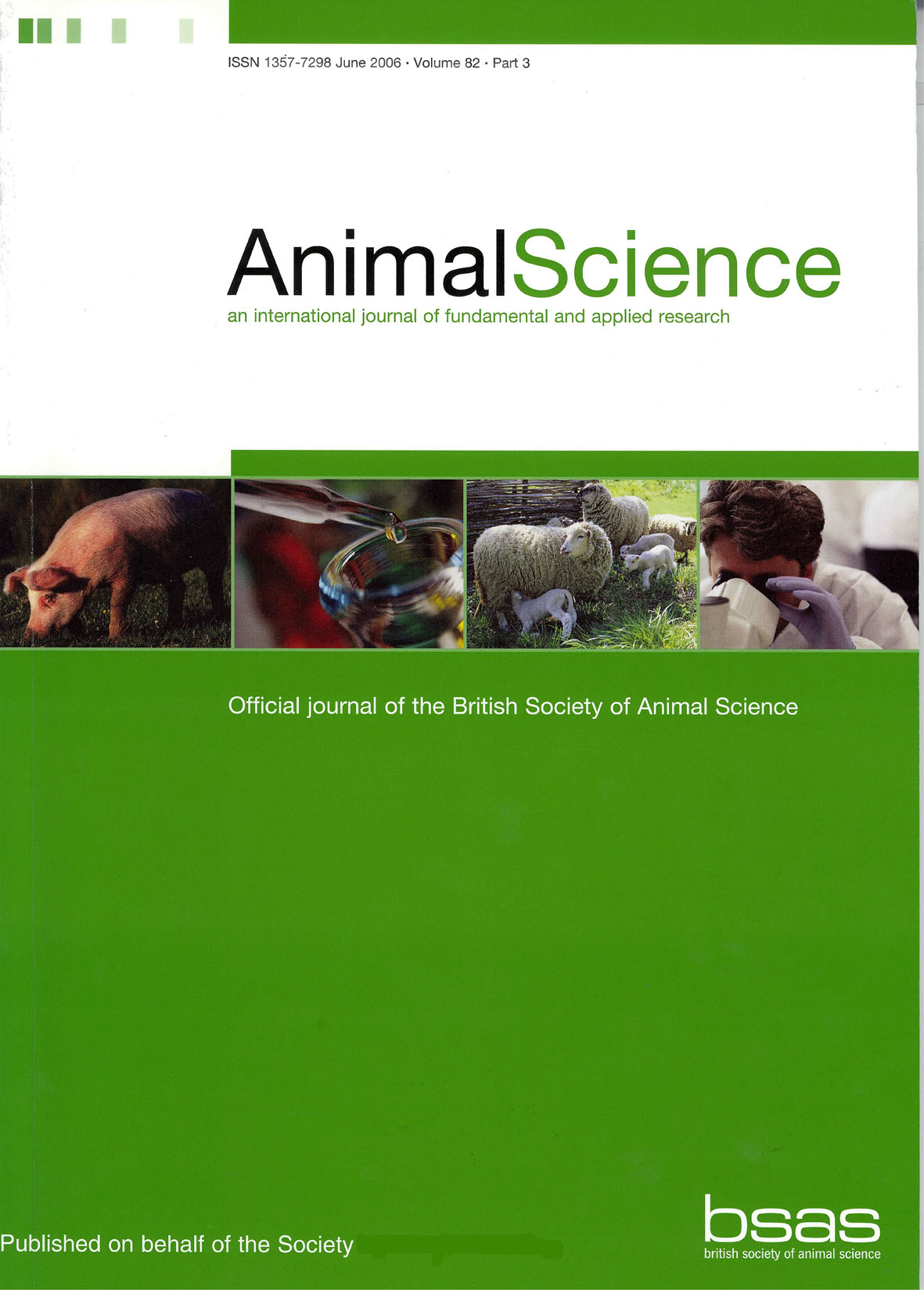Article contents
The effects of concentrate energy source on silage intake and animal performance with lactating dairy cows offered a range of grass silages
Published online by Cambridge University Press: 02 September 2010
Abstract
A partially balanced change-over design experiment was made to examine the effects of concentrate energy source on the voluntary food intake and animal performance of 50 lactating dairy cows offered a diverse range of grass silages. The silages were also offered as the sole diet to 10 dairy cows in a partially balanced change-over design experiment. A total of five silages were prepared. Silages A, B and D and silages C and E were harvested from primary regrowths and secondary regrowths respectively of predominantly perennial ryegrass swards. Herbage was ensiled either pre-wilted or unwilted and either untreated or treated with a bacterial inoculant or formic acid based additives. For silages A, B, C, D and E, dry matter (DM) concentrations were 473, 334, 170, 170 and 256 (s.e. 4·0) g/kg, pH values 4·42, 4·01, 4·88, 4·46 and 3·91 (s.e. 0·059), ammonia-nitrogen (N) concentrations 86, 88, 289, 182 and 135 (s.e. 10·6) glkg total N and in vitro DM apparent digestibilities 0·76, 0·76, 0·75, 0·73 and 0·75 (s.e. 0·009) respectively. When offered as the sole diet DM intakes were 14·1,14·7,10·5,10·1 and 11·5 (s.e. 0·50) kg/day. Five concentrates were formulated to contain similar concentrations of crude protein, effective rumen degradable protein (ERDP), metabolizable energy (ME) and fermentable ME (FME) but using different carbohydrate sources to achieve a wide range of starch concentrations. For the low and high starch concentrates, starch concentrations were 50 and 384 g/kg DM, and acid-detergent fibre concentrations were 128 and 75 g/kg DM respectively. The silages were offered ad libitum supplemented with 10 kg concentrate per head per day. For silages A, B, C, D and E silage DM intakes were 10·6, 10·5, 8·5, 8·6 and 9·0 (s.e. 0·37) kg/day and milk yields 23·9, 28·1, 26·2, 26·1 and 25·0 (s.e. 0·76) kg/day respectively. Concentrate energy source did not influence (P > 0·05) silage DM intake, diet apparent digestibility or the yields of milk or fat plus protein. For concentrates containing 50, 131, 209, 310 and 384 g starch per kg DM, milk protein concentrations were 32·0, 32·2, 32·5, 33·0 and 33·6 (s.e. 0·13) glkg, milk fat concentrations were 44·5, 43·9, 43·8, 43·3 and 43·1 (s.e. 0·35) glkg and urinary allantoin concentrations 15·2,15·4, 17·0, 1.7·6 and 18·0 mmolll respectively. Increasing starch intake resulted in positive and negative linear relationships for milk protein (P < 0·01, R2 = 0·96) and fat (P < 0·01, R2 = 0·96) concentrations respectively. There were no significant concentrate energy source × silage type interactions on silage intake or yields of milk or fat plus protein (P > 0·05). However there was a concentrate energy source × silage type interaction on milk fat yield (P > 0·05). It is concluded that, with silages of varying fermentation and intake characteristics but similar apparent digestibility, there were no concentrate energy source × silage type interactions on food intake, milk composition or milk yield. Also concentrate energy source had no effect on silage DM intake or milk yield. However increasing starch intake linearly increased milk protein concentration, probably due to increased microbial protein synthesis and decreased milk fat concentration.
- Type
- Research Article
- Information
- Copyright
- Copyright © British Society of Animal Science 1998
References
- 53
- Cited by


